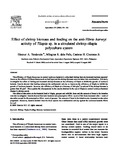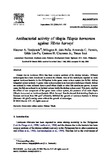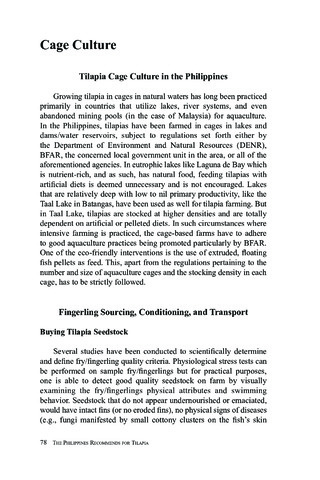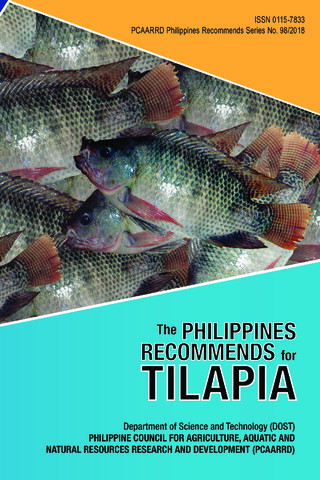Effect of shrimp biomass and feeding on the anti-Vibrio harveyi activity of Tilapia sp. in a simulated shrimp–tilapia polyculture system

View/
Request this document
Date
2006Page views
440Metadata
Show full item recordCited times in Scopus
Share
Abstract
The efficiency of Tilapia hornorum to control luminous bacteria in a simulated shrimp farm environment has been reported. However, the effects of different factors such as feed input and the shrimp biomass were not taken into consideration. This study investigated the effect of feeding and increased shrimp biomass on the efficiency of tilapia to inhibit the growth of luminous bacteria. Results showed that feeding enhances the antibacterial activity or improves the efficiency of tilapia to inhibit the growth of luminous bacteria. However, the efficiency of tilapia at a biomass of 500 g/m3 is reduced if the shrimp biomass is greater than 80 g/m3. This explains the discrepancies in the results obtained in the use of tilapia to control luminous bacterial disease in shrimp ponds.
The effect of starvation on the bacterial load of tilapia, grouper and milkfish feces and the amount of feces in the intestine was also investigated. Results showed that total bacterial and presumptive Vibrio count of fish feces decreased after 1 week of starvation except for the presumptive Vibrio count of grouper. The amount of feces in the intestine also decreased as starvation progressed. Moreover, bacteria isolated from the three species have antibacterial activity against the luminous bacteria Vibrio harveyi.
Suggested Citation
Tendencia, E., dela Peña, M. R., & Choresca, C. H., Jr. (2006). Effect of shrimp biomass and feeding on the anti-Vibrio harveyi activity of Tilapia sp. in a simulated shrimp–tilapia polyculture system. Aquaculture , 253(1-4), 154-162. https://doi.org/10.1016/j.aquaculture.2005.08.004
Subject
Taxonomic term
Collections
- AQD Journal Articles [1236]
Related items
Showing items related by title, author, creator and subject.
-
Antibacterial activity of tilapia Tilapia hornorum against Vibrio harveyi
Tendencia, Eleonor; dela Peña, Milagros R.; Fermin, Armando C.; Lio-Po, Gilda; Choresca, Casiano H., Jr.; Inui, Yasuo (Elsevier, 2004)Disease due to luminous Vibrio has been a major problem of the shrimp industry. Different technologies have been introduced to control the disease. One of the techniques reported to work against luminous bacteria in the ... -
[The Philippines recommends for tilapia:] Cage culture
Eguia, Maria Rowena R.; Abella, Tereso A.; Yap, Wilfredo G.; Somga, Joselito R.; Garcia, Yolanda T.; Salayo, Nerissa D.; The Tilapia Technical Committee 2017 (DOST-PCAARRD, 2018) -
The Philippines recommends for tilapia
The Tilapia Technical Committee 2017 (DOST-PCAARRD, 2018)Tilapia is one of the most commercially important commodities in fisheries and aquaculture. Although tilapia is relatively easy to propagate and culture, the Philippine tilapia industry needs the necessary boost in the ...





